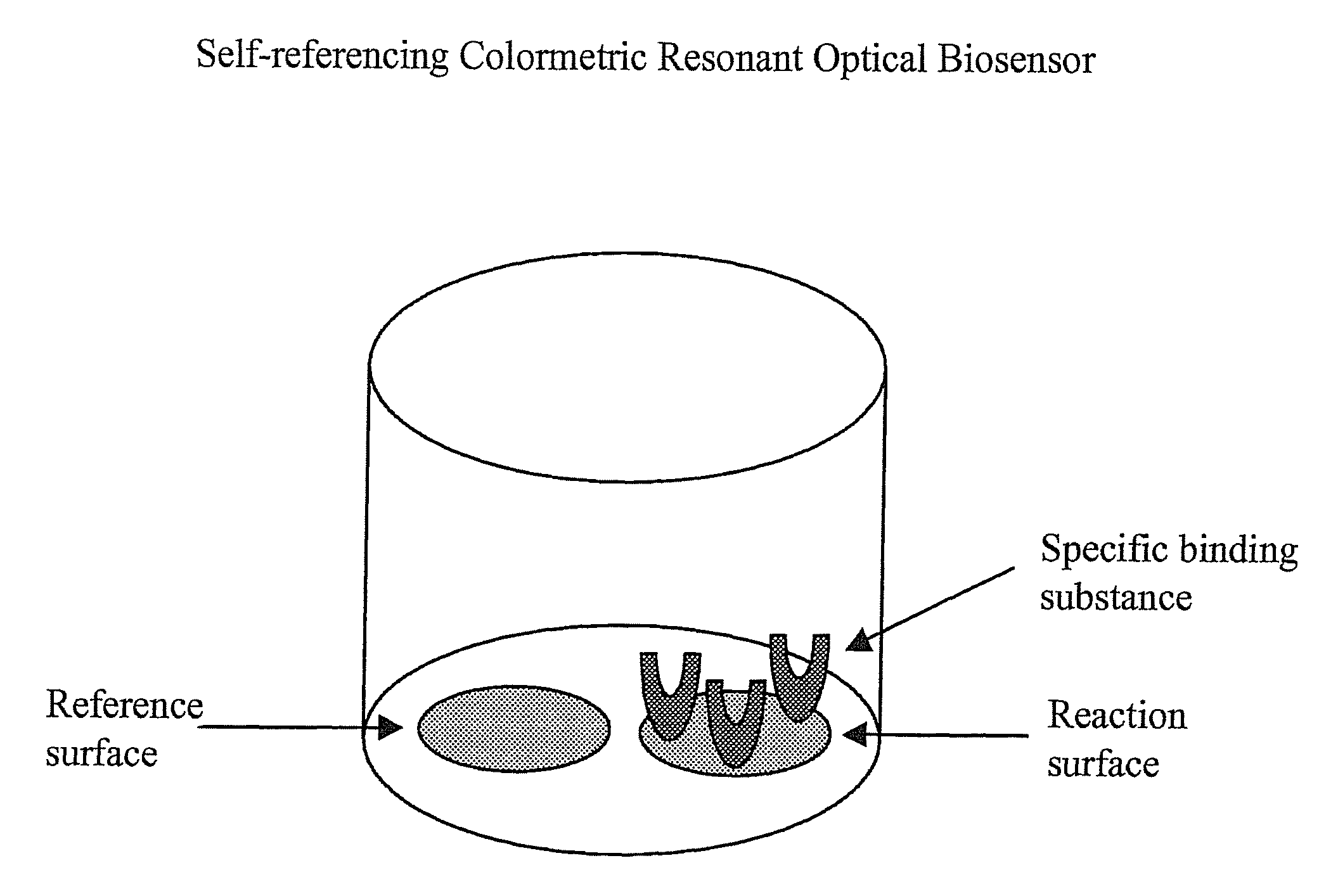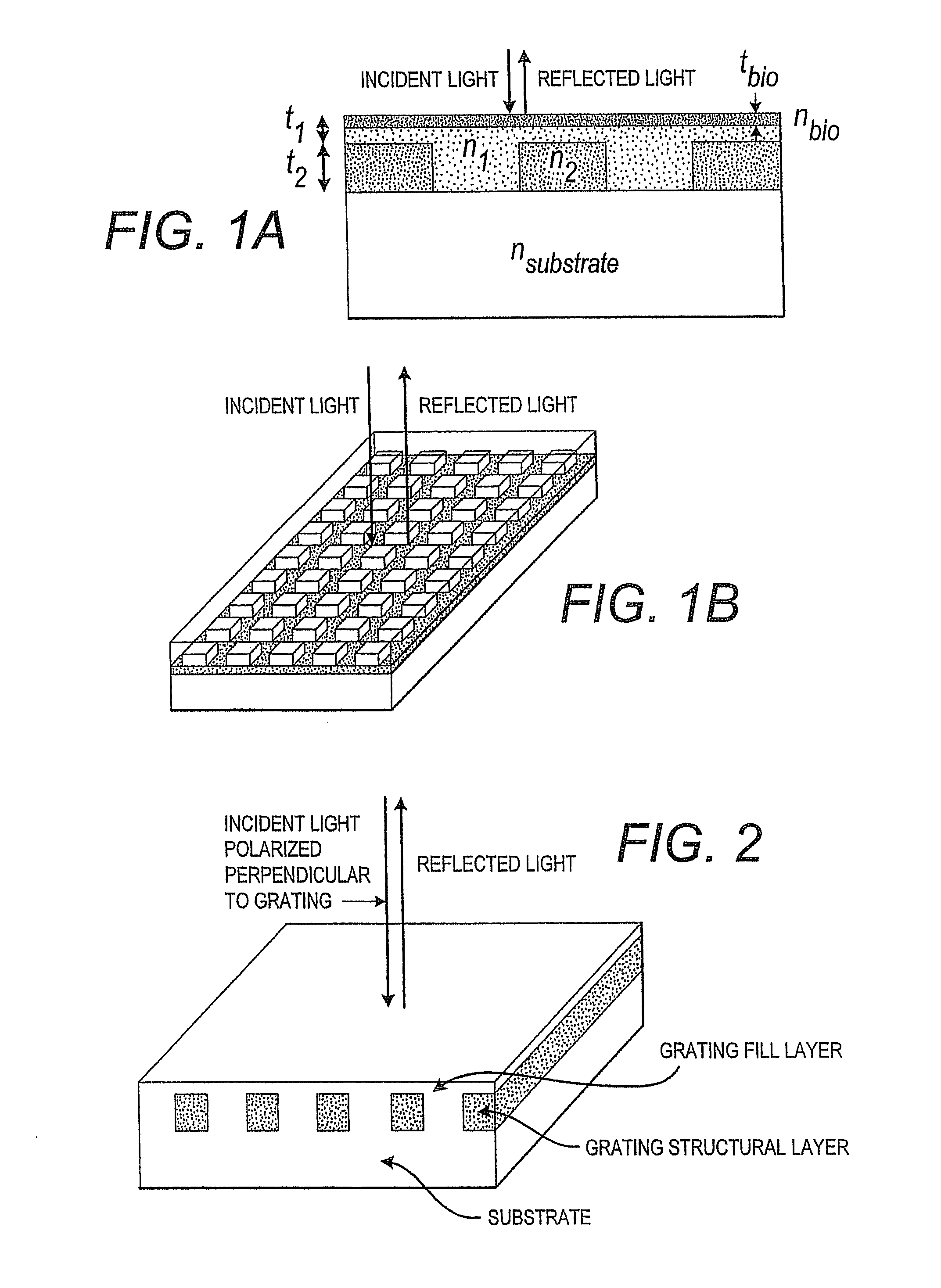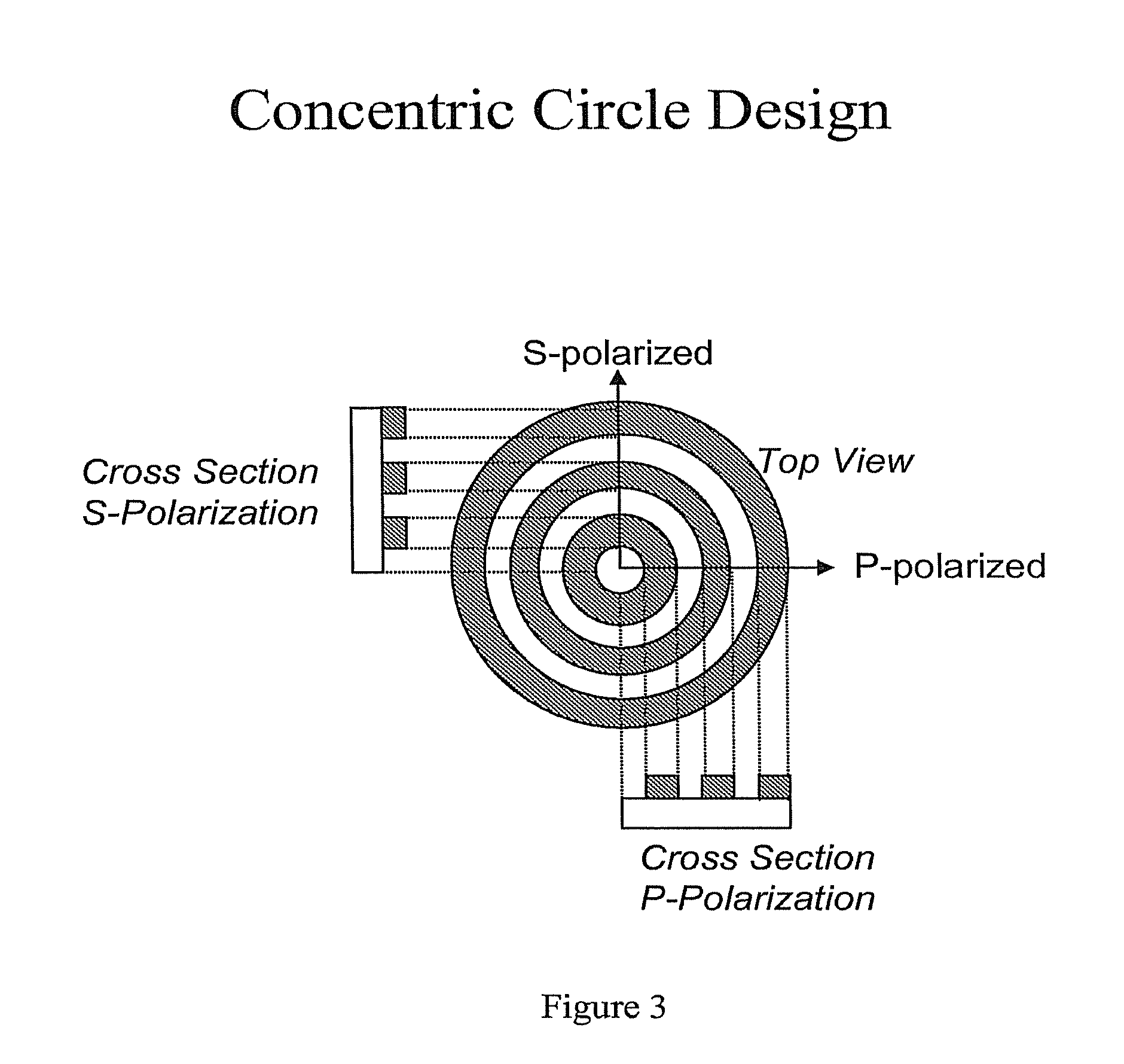Self-referencing biodetection method and patterned bioassays
a biodetection method and bioassay technology, applied in the field of self-referencing biodetection method and patterned bioassay, can solve the problems of reducing the number of usable reaction locations by half, and methods have yet to yield commercially available high-throughput instruments, so as to improve the ability to account and achieve accurate measurement
- Summary
- Abstract
- Description
- Claims
- Application Information
AI Technical Summary
Benefits of technology
Problems solved by technology
Method used
Image
Examples
example 1
Control of Molecular Surface Pattern
[0187]This example demonstrates control of a molecular surface pattern that is generated by a biomolecular cleavage event. Selected regions of a colorimetric resonant optical biosensor embedded within the bottom of a 7 mm diameter microtiter well were treated with a NHS-PEG-biotin solution (Shearwater), the specific binding substance, by applying stripes of specific binding substance with a micropipette tip. The specific binding substance solution was allowed to incubate on the biosensor surface for about 20 minutes before thorough rinsing with water. Following rinsing, the microtiter well was filled with a 1 mg / ml solution of NHS-PEG (Shearwater), which was allowed to incubate in the well for an about 20 minutes. NHS-PEG blocks nonspecific binding of proteins to the biosensor surface. After an additional thorough rinsing with water, a 1 mg / ml solution of streptavidin-Cy5 (Molecular Probes), the specific binding partner, was introduced to the well...
example 2
Arbitrary Biosensor Surface Patterning
[0190]This example demonstrates the ability to generate an arbitrary binding pattern through the application of a specific binding substance to the colorimetric resonant optical biosensor surface. A pattern of gelatin (1 mg / ml, Sigma) was applied to a biosensor with a micropipette tip in the shape of the letters “SRU.” The gelatin was allowed to incubate on the biosensor surface for about 60 minutes before a thorough rinse with water. Next, the entire biosensor surface was exposed to a 1 mg / ml solution of rabbit IgG (Sigma) that attached a uniform thin layer of protein across the biosensor so that the peak wavelength value of the biosensor would be roughly equivalent in all locations. After a second rinse in water, the entire biosensor was exposed to a 1.5 mg / ml solution of collagenase, a specific binding partner, for about 80 minutes. The collagenase is an enzyme that selectively cleaves gelatin, thus selectively removing protein from the surfa...
example 3
Experiment Setup
[0191]Plate—96-well biosensor microplate with a central line of UV curable adhesive drawn in the wells by an automated liquid dispensing instrument.
[0192]Instrument Setup—Instrument was set up to read 2 spots per well. Each spot was offset from the well center by ±2 mm.
[0193]DMSO Concentration Series—A DMSO concentration series of 5% DMSO, 1% DMSO, 0.5% DMSO, and 0.1% DMSO in PBS was added to individual wells of a 96-well biosensor microplate.
[0194]Initial reading. An initial measurement was made to observe the baseline peak wavelength shift over time in the neat wells. Each well contained 90 μL PBS and was read on each side of the barrier. Results are shown in FIG. 11. Baseline drift measurements and peak shape / height read on either side of the well are equivalent.
[0195]DMSO reading. DMSO was added to the wells to create a bulk shift response (as a result of DMSO's higher refractive index) in order to compare responses obtained on the right and left sides of each we...
PUM
 Login to View More
Login to View More Abstract
Description
Claims
Application Information
 Login to View More
Login to View More - R&D
- Intellectual Property
- Life Sciences
- Materials
- Tech Scout
- Unparalleled Data Quality
- Higher Quality Content
- 60% Fewer Hallucinations
Browse by: Latest US Patents, China's latest patents, Technical Efficacy Thesaurus, Application Domain, Technology Topic, Popular Technical Reports.
© 2025 PatSnap. All rights reserved.Legal|Privacy policy|Modern Slavery Act Transparency Statement|Sitemap|About US| Contact US: help@patsnap.com



